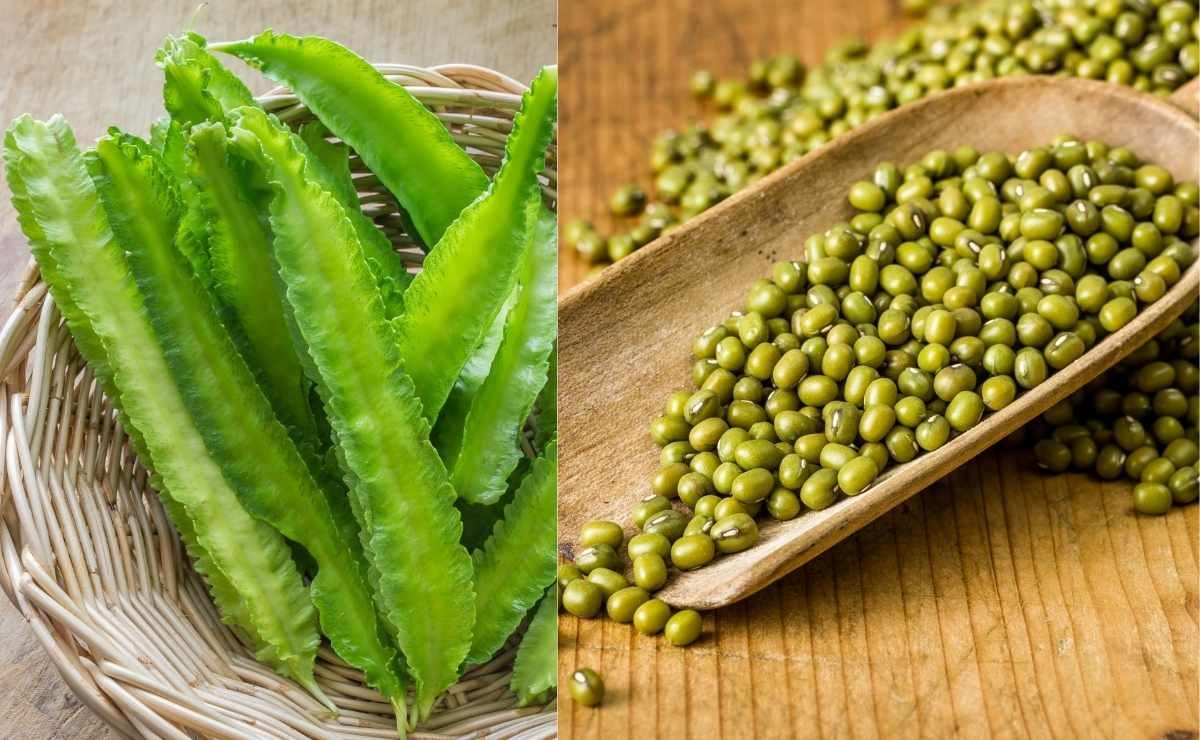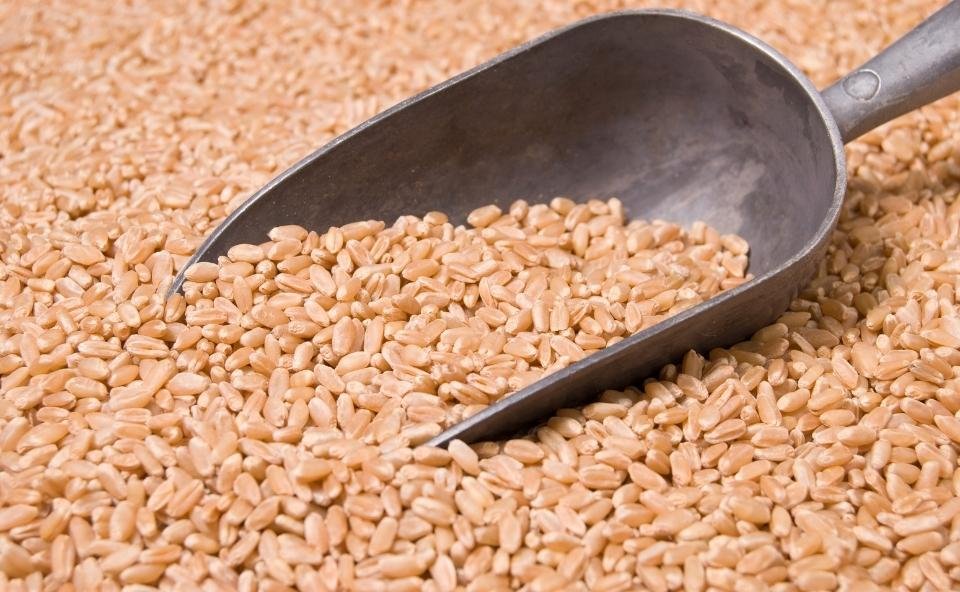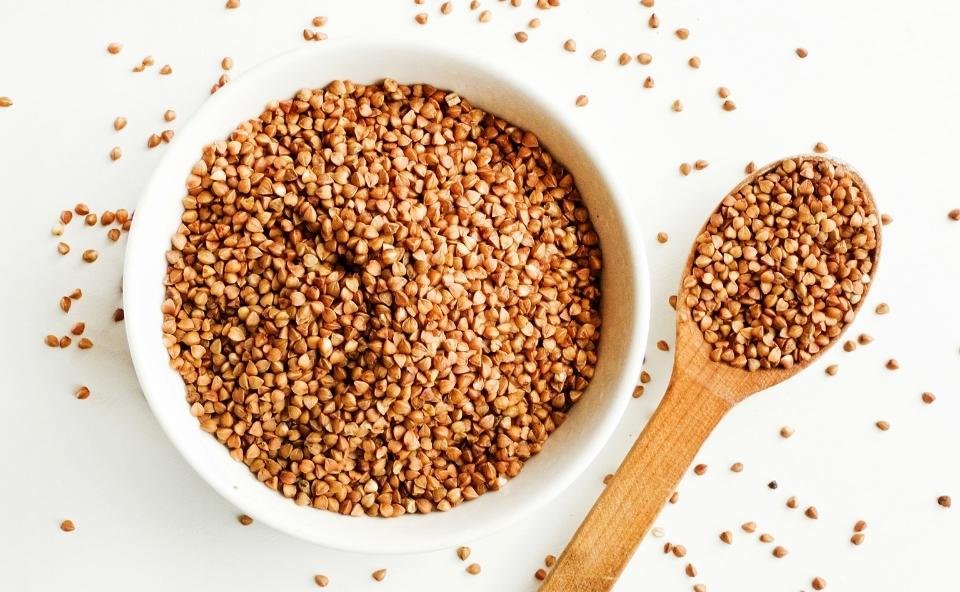If you haven’t tried winged beans yet, you’re seriously missing out!
The first time I spotted winged beans, I had to do a double-take—those frilly green pods looked too wild not to try! Also known as dragon beans or asparagus peas, they’re a crunchy, nutrient-rich tropical superfood that’s been a hidden gem in my kitchen ever since. Packed with plant-based protein, vitamins A and C, iron, and fibre, they’re perfect for stir-fries, salads, and feel-good meals that fuel energy, boost immunity, and support glowing skin.
In this post, you’ll learn all about winged beans—where they grow, how they taste, how to cook them, and why they’re one of the healthiest veggies out there. Whether you’re a curious cook or just looking to eat cleaner without losing flavour, winged beans are a fresh, easy win.
Give them a shot — your taste buds will thank you! 🌟
- What Are Winged Beans?
- A Quick Look at the History
- Appearance, Taste & Texture
- Why Winged Beans Are a Nutrient-Packed Superfood
- Cooking Winged Beans: Quick & Tasty Ways
- Substitutions and Variations
- Storing & Reheating
- 🍽️Popular Recipes with Winged Beans
- Where to Buy?
- How to Grow Winged Beans at Home
- How to Pick Winged Beans
- Frequently Asked Questions
- 🔚Final Thoughts
What Are Winged Beans?
The winged bean—also known as dragon bean, asparagus pea, or princess bean—is a tropical superfood that I first discovered during my travels in southern Asia. Grown in hot, humid climates like Thailand, Malaysia, and the Philippines, it thrives in parts of Africa, India, Latin America, and even Hawaii. Thanks to Day Neutral varieties, it grows nearly all year—a true farmer’s dream!
What makes it special? Every part is edible — pods, seeds, leaves, flowers, and even tubers. I’ve stir-fried it, added it to salads, and even enjoyed it raw. The taste is fresh, and the versatility is unbeatable.
On the health front, it’s a nutrient-packed powerhouse. 100g boosts vitamin C, A, iron, calcium, potassium, vitamin B1, and solid plant-based protein. Plus, it’s low in sugar and carbs and fits right into modern healthy diets. Simple, clean, and nourishing, it’s one of my go-to picks for feel-good eating.
A Quick Look at the History
The winged bean (Psophocarpus tetragonolobus) has roots in Papua New Guinea, where it’s been grown for generations. Over time, this hardy legume flourished in hot, humid climates across Southeast Asia, South Asia, and Africa. I first discovered it while exploring tropical farming traditions, and it’s easy to see why it’s so valued. With edible pods, seeds, leaves, flowers, and even tubers, it’s been a true supercrop, nourishing communities and traditions for centuries.
✅ Source: ScienceDirect-History
Appearance, Taste & Texture
Winged beans are a tropical treat with eye-catching pods—vibrant green and lined with four frilly, wing-like edges. They’re usually picked when tender and crisp, 4 to 6 inches long. The plant also shows off lush green leaves and soft blue flowers, making it a charming addition to any garden or plate.
Regarding flavour, winged beans are mild and slightly sweet, somewhere between green beans and asparagus. They also have a gentle nuttiness, especially in the tubers. When cooked, they stay pleasantly crunchy, which makes them great for stir-fries, salads, or steaming.

Raw winged beans placed side by side with boiled winged beans, showing texture and colour differences.
I love how easy they are to use. Their subtle taste works with so many spices, and that satisfying crunch brings a fresh texture to every dish.
Why Winged Beans Are a Nutrient-Packed Superfood
Winged beans have become one of my favourite ingredients—not just for their crisp texture and nutty flavour but for how packed they are with nutrients. Whether tossing them in a stir-fry or adding them to salads, I love knowing I’m fueling my body with something beneficial.
Nutritional Highlights
- Plant-Based Protein Power: With nearly 30g of protein per 100g, winged beans rival soybeans—perfect for vegetarians or anyone looking to boost protein naturally.
- Fibre for Gut Health: Their fibre content helps digestion, supports a healthy gut, and keeps things regular.
- Loaded with B Vitamins: Rich in B1, B2, B3, and B9, winged beans help with energy, brain function, and metabolism.
- Strong Bones Support: 800mg of calcium per 100g? Yes, please. These beans are great for bone density and long-term bone health.
- Iron Boost for Energy: With 24.5mg of iron per 100g, winged beans help fight fatigue by supporting red blood cell production.
- Eye-Friendly Vitamin A: Vitamin A supports clear vision and retina health—one more reason to add these to your meals.
- Immunity Enhancer: Winged beans provide a healthy dose of vitamin C (18.3mg/100g), which helps keep the immune system strong and resilient.
- Weight-Friendly Choice: They are low in calories but high in protein and fibre, which helps you feel full longer—great for healthy weight goals.
- Rich in Antioxidants: Antioxidants in winged beans help fight free radicals and reduce the risk of chronic disease.
- Glowing Skin Support: Vitamins A and C promote collagen production and protect skin from damage, leaving you glowing from the inside out.
- Pregnancy-Friendly Nutrients: Their folic acid content makes winged beans a wise choice for expectant moms, supporting fetal development.
Winged beans are more than just a pretty pod. With protein, vitamins, minerals, and fibre all in one, they’re a tasty, smart way to nourish your body every day.
Cooking Winged Beans: Quick & Tasty Ways
Curious about how to cook winged beans? It’s easier than you think—and totally worth it. Whether you want them tender, crispy, or raw and crunchy, cooking them right makes all the difference in flavor, texture, and nutrition.
- Boiling: Simmer sliced beans in salted water for 2 minutes until tender-crisp. Drain and season.
- Steaming: Steam in a basket over boiling water for 3–5 minutes until vibrant and soft.
- Stir-Frying: Sauté with garlic in oil for 1–2 minutes. Add a splash of water, cover, and cook 2–3 more minutes.
- Roasting: Toss with oil and salt, and roast at 400°F for 10 minutes until the edges crisp up.
- Raw: Thinly slice and toss into salads. Super crunchy and nutrient-rich—rinse well!
✨ Try these simple methods and discover how winged beans can bring flavour, crunch, and wholesome nutrition to your table.
Substitutions and Variations
Can’t find winged beans, or are you just in the mood to switch things up? Whether it’s due to availability, taste preference, or a little kitchen creativity, here are some tasty and easy swaps to keep your meals fresh, vibrant, and nutritious.
- Yardlong Beans: A go-to alternative to winged beans in Southeast Asian cooking. They bring a similar crunch and soak up sauces beautifully in stir-fries and stews.
- Green Beans: They are an everyday, easy swap for winged beans. They are mild, crisp, and perfect for salads or sautés.
- Snow Peas: Want a gentle crunch? These offer a sweet snap and work great in quick stir-fries or as a raw salad addition.
- Okra: For a gooey texture twist, Use okra instead of winged beans in hearty dishes like curries and stews.
- Asparagus: A grassy, tender option that’s perfect when grilled, sautéed, or lightly steamed.
✨ Get creative in the kitchen—these swaps let you enjoy the vibe of winged beans, even when they’re not around.
Storing & Reheating
If you’ve got extra winged beans on hand like I often do, here’s how to keep them fresh and flavorful:
- Storing: Pop them in the fridge (32–40°F) wrapped in a damp cloth or a perforated bag—they’ll stay crisp for up to 8–10 days. For more extended storage, blanch for 1–2 minutes, cool in ice water, then freeze in a single layer before sealing in containers.
- Reheating: Warm gently on the stovetop with a splash of water or broth—5 to 7 minutes on low does the trick. If you prefer the microwave, use short 30-second bursts on medium power, stirring in between to keep that tender, crisp bite.
✨ These simple tricks help you lock in flavour and nutrients so your winged beans taste just as good the next day.
Are Winged Beans High in Uric Acid? As someone who closely monitors their uric acid levels, I discovered that winged beans are actually low to moderate in purines, much better than other legumes, such as chickpeas or lentils. Based on the 2024 National Purine Database, they’ve got just 30–50 mg of purines per 100g, so they’re less likely to trigger gout flare-ups. What’s more, they’re packed with vitamin C and manganese, both great for kidney health and helping the body balance uric acid naturally. I now include them in my low-purine meals a few times a week—just lightly steamed with a pinch of salt—and they taste amazing without the worry!
🍽️Popular Recipes with Winged Beans
Winged beans are crunchy, protein-packed, and full of flavour—perfect for quick meals, salads, and savoury stir-fries. If you’re wondering about the best ways to cook winged beans, here are some tried-and-true favourites:
A quick, crunchy stir-fry with winged beans, garlic, and soy—bold flavour in just 15 minutes.
A tangy mix of shrimp, coconut, and fresh herbs.
Zesty, herb-packed salad with lemongrass and chilli.
💬 These easy winged bean recipes are a fun way to bring something fresh, flavourful, and nutrient-rich to your table!
Are Winged Beans Keto-Friendly? Winged beans aren’t your usual keto pick, but I’ve found them surprisingly helpful on my low-carb journey—especially when I need a boost of plant-based protein. They might sound high, with around 13–15g of carbs per 100g, but their rich fiber content slashes the net carbs, making them a clever, occasional choice. I like adding them to stir-fries with coconut oil or tossing them in salads with avocado for extra healthy fats. They’re also rich in essential amino acids, which greatly aid in my recovery after workouts. Just stick to small portions—too much can nudge you out of ketosis.
Where to Buy?
Craving that crisp, nutty bite of winged beans? Here are a few trusted spots in the U.S. to get them—fresh or ready to grow—as of 29 April 2025:
- Fresh Winged Beans (100g) – $0.32: Lakpura offers fresh winged beans, perfect for stir-fries, salads, or steaming.
- Winged Bean Seeds (5g) – $3.99: Planning to grow your own? True Leaf Market has non-GMO seeds, which are perfect for home gardeners.
- Urizun Japanese Winged Bean Seeds (10 seeds) – $5.00: A tasty heirloom variety from Baker Creek, ideal for small gardens and packed with flavour.
🔍 Prices can shift, so check for the latest before you buy!
🌱 Curious about growing winged beans at home? If you’re up for a fun gardening challenge or want to enjoy this superfood fresh from your backyard, the section below will guide you through it!
How to Grow Winged Beans at Home
Growing winged beans at home is rewarding, especially in a warm climate. These tropical legumes thrive in heat and humidity, perfect for long, sunny seasons. With some care, you can enjoy their edible pods, leaves, and tubers right from your garden.
- Choose the Right Spot: Winged beans need full sun, at least 6 hours of direct sunlight daily. Select a spot with well-draining soil enriched with compost or aged manure, and ensure it has a neutral PH. They grow well in clay, silt, or loam soils.
- Start Seeds Properly: Soak seeds overnight and scarify the seed coat (nick it) for fast germination. Plant about 1 inch deep and space them 6 inches apart. Expect 7–14 days of germination at temperatures between 77–85°F (25–29°C).
- Provide Support: Winged beans are climbing plants, so support their growth with a trellis, fence, or stakes. This helps save space and promotes good air circulation.
- Water Wisely: Keep the soil moist but not waterlogged. Water in the early morning or late afternoon to avoid fungal issues, and try not to wet the leaves.
- Fertilize Moderately: Winged beans fix their own nitrogen, so avoid heavy fertilization. Instead, amend the soil with compost before planting and steer clear of high-nitrogen fertilizers, which may lead to more foliage than pods.
- Harvesting Tips: Pick the pods when they’re 1–2 inches long and tender. If left too long, they can become tough and stringy. All parts of the plant are edible—pods, leaves, flowers, and tubers!
Growing winged beans is not only fun but also rewarding. They’re nutritious, versatile, and easy to grow with a bit of attention. Whether new to gardening or a pro, adding winged beans to your garden is an experience you won’t regret!
How to Pick Winged Beans
Picking the freshest winged beans does make a difference—I’ve learned that the right ones taste extra crisp and subtly sweet, with that perfect flavour you only get from garden-fresh produce. Look for a bright green colour, and skip any with a yellowish hue. They should feel firm, with a smooth surface, and while a few subtle marks on the edges are normal, too many brown or black spots mean they’re past their best.

Freshly harvested winged bean plant leaves in a basket – organic and nutrient-rich leafy greens.
In short, the less damage, the better the taste. When you find those truly extra fresh pods, you’ll know they’re worth it.
🌸Winged Beans and PCOS: From my experience, winged beans are a fantastic superfood for PCOS because they’re rich in plant-based protein, fiber, folate, and antioxidants that help balance hormones, lower inflammation, and improve insulin resistance—all key for managing PCOS. What I love most is their low glycemic load, so they don’t cause blood sugar spikes, making them ideal for a PCOS-friendly diet. Recent studies also support this. I often add lightly steamed winged beans to salads with nuts for a tasty, nutrient-packed meal. Just be mindful of processed foods that can counteract their benefits.
Frequently Asked Questions
How do you cook winged beans?
You can boil, steam, stir-fry, roast, or even eat them raw. I boil sliced pods for 2 minutes to keep them crisp and flavourful.
Are winged beans healthy?
Definitely! They’re packed with plant protein, vitamins A and C, calcium, and iron—perfect for a healthy, nutrient-rich meal.
Can you eat winged beans raw?
Yes! I love tossing young pods into salads—they’re crunchy, mildly sweet, and refreshing.
Can I grow winged beans at home?
Absolutely! They grow well in warm weather and love climbing a trellis. You can grab seeds from True Leaf Market or Baker Creek.
What do winged beans taste like?
They have a mild, nutty flavour with a slightly sweet, earthy note—great in savoury and fresh dishes.
🔚Final Thoughts
Ready to shake up your veggie game? Winged beans aren’t just a superfood—they’re a crunchy, vibrant way to nourish your body and bring new energy to your meals. Whether you’re stir-frying, salad-tossing, or growing your own, give these underrated green gems a try—you might find your new favourite plant-powered ingredient!
✅ Sources:
- Nutrition and You – Winged bean nutrition facts and health benefits
- Wikipedia – Winged bean
- Specialty Produce – Wing Beans Information, Recipes and Facts
- ResearchGate – History of agriculture in Papua New Guinea
- SpringerLink – Nutritional quality of the winged bean (Psophocarpus tetragonolobus)
- MDPI – Plants Journal – Winged Bean: A Nutrient-Rich Legume for the Future
- PubMed Central (PMC) – Nutritional and medicinal properties of winged bean (Psophocarpus tetragonolobus)
- SpringerLink – Physiological characterization and salt tolerance in winged bean genotypes
- Growables – Winged Bean – Psophocarpus tetragonolobus
- Taylor & Francis Online – Winged bean: A multipurpose underutilized legume

Hi, I’m the voice behind The Bean Bite — someone who’s genuinely obsessed with beans! What started as a simple love for homemade lentil stew turned into a journey of discovering bean varieties, cooking tips, and their amazing health benefits. This site is my way of sharing that joy with you — one bean at a time.



